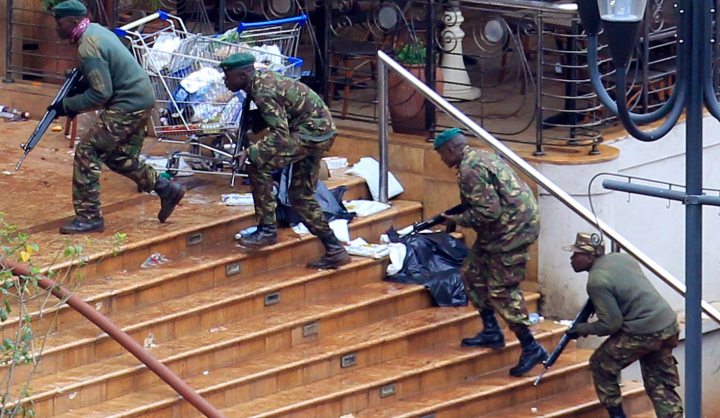ISS TODAY
Violence against civilians is on the rise in Africa

Total fatalities are down, but the surge in certain types of violence should concern African governments.
First published by ISS Today
Militant Islamist group activity in Africa has doubled since 2012, according to the Africa Centre for Strategic Studies (ACSS), a think tank funded by the United States Department of Defence. It also says Islamist groups in Africa are increasingly targeting civilians.
In July the ACSS released an analysis of violence trends in Africa over the past decade, using data from the Armed Conflict Location & Event Data Project (ACLED). As a proportion of all reported events in 2018, violence against civilians in sub-Saharan Africa was at its highest level since 2012. As a share of all conflict-related fatalities, violence against civilians was at its highest level since 2010, according to ACLED.
Although this is troubling news, violence from militant Islamist groups still represents a relatively small share of total violence on the continent.
The ACSS analysis looked at the four major militant Islamist groups (al-Shabaab, al-Qaeda, Boko Haram and Islamic State) as well as their splinters and affiliate groups – so the actual number of organisations is quite large. Despite that, these groups accounted for only about a third of all reported deaths from conflict events in Africa and just 10% of all reported conflict events.
The focus of the US Department of Defence is on militant Islamist groups, but the fact that violence against civilians is on the rise more broadly should be of concern to all African policymakers. This is particularly the case in light of how violence has evolved in the past decade.
In the aftermath of the Arab Spring (2011-2014), the number of reported incidents of violence against civilians increased by an average of 34% per year. However from 2015 to 2017 the increase was much more gradual, at just over 2% per year. That brief lull in violence reversed sharply in 2018, when violence against civilians across Africa ticked up by 30% from 2017 levels.
This trend is alarming, but stepping back to examine the broader context – i.e. all conflict events across Africa – offers a slightly more balanced picture. Although the number of total reported conflict events in 2018 was the highest ever recorded by ACLED, the number of total fatalities across sub-Saharan Africa was at its lowest level since 2012.
There are multiple conflicting trends occurring simultaneously. On the one hand, there is a broad decline in the severity of conflict as measured by the number of people killed. On the other hand, of those killed, there is a spike in the number of civilians targeted.
One possible explanation is that, by and large, sub-Saharan Africa is becoming more peaceful. But in areas where there is still conflict, violent groups – or the agencies that respond to them – are growing more heavy-handed in their tactics.
One way of exploring that hypothesis would be to compare ACLED data to that from the Global Terrorism Database (GTD). These two projects use different methodologies, so the data isn’t strictly comparable.
However, a glance at a similar cross-section of events in Africa offers some instructive insights (Figure 1). In fact the GTD trends almost mirror those from ACLED – and the smaller ACSS study of Islamist groups (not pictured here). This is not entirely unexpected, since the methodologies rely on similar sources (i.e. open-source reporting), but is still interesting.
Figure 1 shows the number of reported events from each source, and includes the total for sub-Saharan Africa from GTD, and the number of incidents of violence against civilians from ACLED (with select North African countries removed).

Sources: ACLED and GTD
Note: Although ACLED reports data frequently, 2017 is the most recent year for GTD data
Figure 1 highlights that both terror attacks and violence against civilians have grown since the start of the decade. It also shows that the level of violence against civilians increased from 2016 to 2017 despite the number of terror incidents recorded by GTD remaining relatively constant. This may suggest that as terrorist organisations become more indiscriminate in their use of violence, as has been the trend, state responses have followed a similar trajectory.
There is some anecdotal evidence that this is the case. The overly militaristic responses to the crises unfolding in the Sahel region, driven partly by European influences, have been widely criticised. There has also been evidence of an escalation of the American drone programme, particularly in Somalia, as well as increasingly kinetic interventions in the Libyan conflict.
This is also borne out in the data, to some extent. For example, in 2016 the police and military of Cameroon were responsible for only eight fatalities in reported ACLED events of violence against civilians. In 2017, that figure climbed to 32 and by 2018 it was more than 280.
However, the figures for Nigeria show a sharp increase from 2016 to 2017, but then a decline from 2017 to 2018. This shows the difficulty of making sweeping generalisations about conflict across a continent as diverse as Africa.
Any decent social scientist will tell you that correlation does not imply causation. There is no definitive evidence that state responses to terrorism across the continent have generally become more likely to injure civilians. However, increasingly militaristic responses not only run the risk of harming more civilians, but can also be effective recruiting tactics for terrorist organisations themselves. State violence, especially from the security sector, can push people towards radicalisation.
At a minimum, these conflict trends underscore that in Africa, things are getting better in some places, but not everywhere, not for everyone – and not fast enough. DM
Zachary Donnenfeld is a senior research consultant, African Future & Innovation, ISS



















 Become an Insider
Become an Insider